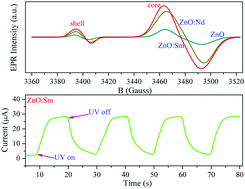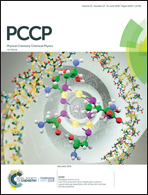Lattice defect-formulated ferromagnetism and UV photo-response in pure and Nd, Sm substituted ZnO thin films
Abstract
The induction of charge and spin in diluted magnetic semiconductor ZnO is explored for spintronic devices and its wide direct band gap (3.37 eV) and large exciton binding energy (60 meV) exhibit potential in UV photodetectors. We reported the ferromagnetic and optical properties of pure ZnO, Zn0.97Nd0.03O and Zn0.97Sm0.03O thin films. These thin films were synthesized by a metallo-organic decomposition method and annealed at 500 °C for 7 h. Rietveld refinement of the XRD data results in a wurtzite ZnO structure with Nd, Sm doping. The dopants and nanoparticle size are responsible for wurtzite structural deformation, inducing lattice strain effect, which may influence the band gap energy and high-TC ferromagnetism of ZnO. The average size of ZnO nanoparticles with Nd, Sm doping is 10 nm, confirmed with atomic force microscopy. The Raman spectra confirm the wurtzite structure of ZnO with crystalline quality and lattice defect formation with dopant Nd, Sm ions. A near-band-edge emission due to band gap energy is evaluated with photoluminescence spectra, which also involved multiple visible emissions due to oxygen vacancies. The oxygen vacancies-mediated magnetic interactions impart room temperature ferromagnetism in pure ZnO which is enhanced with Nd, Sm doping. The electron paramagnetic resonance spectra revealed the effects of defects and unpaired electrons responsible for observed room temperature ferromagnetism. The zero field cooling and field cooling magnetic measurements include antiferromagnetic interactions without any spin-glass formation. The observed ferromagnetism also correlates with first principle calculations reported for Nd, Sm-doped ZnO and suggests long-range ferromagnetic ordering attributed to defect carriers. The Nd, Sm doping into ZnO thin films significantly enhances absorption in the UV region and suggests its usability for UV detectors. Under UV irradiation (λ = 325 nm), the value of photocurrent in Nd, Sm:ZnO thin films is highly enhanced for possible use in UV sensors.


 Please wait while we load your content...
Please wait while we load your content...